Salon
BagNewsSalon: Assignment Egypt
The most recent BagNews Salon, held on March 20th in collaboration with Open-i, brought together photographers and visual academics to analyze photos of Egypt’s 18-day revolution. Watch the full archive or read salient quotes from the conversation below.
Open-i
Images and Selected Quotes:
Co-Produced for BagNews by Ida Benedetto
(photo: David Degner / Wall Street. caption: A woman standing through the moon roof of a car in Alexandria help up a flag.)
David: This image fits the western liberal mindset of what they want the revolution to be. It’s a non-threatening female joyous with the wind of freedom blowing through her hair. It takes away the complexity of the other darker celebration photos of young men shooting fire out of aerosol cans.
(photo: Laura El-Tantawy / Burn Magazine. caption: Egyptian anti-government protesters sleep on the tires of a military tank stationed on Tahrir (Liberation) Square.)
Michelle: This image shows us the level of commitment. Everyone here is willing to be vulnerable and confront the reality of the powers that are beyond them entirely.
(photo: Ed Ou / The New York Times. caption: Demonstrators crammed into Tahrir Square to reject anything less than the president’s immediate ouster.)
Laura: This is the kind of picture you must have in this situation. Considering the reports you were hearing on Egyptian State TV that there were only a few thousand people in Tahrir Square, seeing this is really vital… It reminds me of images of the annual Muslim pilgrimage at Mecca.
(photo: Nevil Zaki / Twitter. caption: Christians faced outward and joined hands in a circle to protect a Muslim group of protesters as they prayed in Egypt.)
Michael: This photo hit the news wires via twitter. It shows Christians protecting Muslims in prayer. What struck me is that the look of caution implies the danger involved at the same time that the hand holding emphasizes brotherhood and solidarity. It was a very powerful and early contradiction to the fear mongering by Mubarak.
(photo: Tara Todras-Whitehill / Associated Press. caption: Anti-government protesters take pictures of protest art in Tahrir Square, the center of anti-government demonstrations, in Cairo, Egypt, Sunday, Feb. 6, 2011.)
Nathan: From the beginning of the edit we had cars and then tanks to an image from Twitter and the naming of Facebook, to the technical challenges of photographing the square and the tanks becoming a figure… in all these images, technology plays a variable role in both seeing and being available to be seen. It’s unusually in contrast to, say, Libya right now where the events are very different.
Michael: This is a corollary to the tanks in the square. It’s like they are saying, ‘You’re got your tanks, we’ve got Facebook.’ they even made it out of rocks, the same rocks that a couple days later or a couple days before became projectiles.”
(photo: Tara Todras-Whitehill / Associated Press. caption: Government protesters pray atop an Egyptian tank during traditional Friday prayers.)
David: I think these are highly ambiguous images for the west. The idea of Muslims praying next to tanks. It’s unclear as to weather these guys have the tanks or weather they are containing these people. The perpetual association between the two of them is really a conservative mind map… You can imagine Glen Beck running this pictures as evidence of his conspiracy theories of an Islamic revolution. At the same time, you can run a completely different narrative of the tanks being part of a circle containing these people.
(photo: CBS. caption: Lara Logan, the CBS news correspondent, in Tahrir Square in Cairo moments before she was assaulted.)
Loret: I was disturbed for a number of reasons, in part because of the way Americans would look at this. The reporter is an American icon. She’s blond, blue eyed. She’s wearing pearls, for heaven’s sake. She has a pastel blue jacket… We tend to hold a particular type as more valuable or more praised. When something happens to someone in our country here, we say, ‘Oh, it’s so awful. She’s so pretty,’ as if homely people deserve something. This fed into [the publication and reception of this image].
Nathan: This one image can undo in people’s minds the power of other images. That points at the fragility of the visual environment. One image, which reflects something that’s peculiar in a whole event, can overtake the event.
David: If this had taken place in time square, this photo would never have been released.
(photo: Chris Hondros / Getty Images. caption: A supporter of Egyptian President Hosni Mubarak rides a camel through the melee during a clash between pro-Mubarak and anti-government protesters in Tahrir Square on Feb. 2, in Cairo, Egypt.)
Laura: Afterward, people in the square humorously dubbed this ‘The Horse and Camel Attack,’ harkening back to very old times when people would attack each other with swords. It shows how stupid the government was. If this how they think they were going to handle the issue, it reflects on how they were handling the country in general.
(photo: Ed Ou / New York Times. caption: Young protesters have turned a downtown Cairo apartment into a secret hiding place, recharging after long days of protest and uploading homemade documentaries about Tahrir Square to a shared Facebook page.)
Nathan: Both this image and the images in and around the tanks are images of resistance. This one is the much more consumable image of resistance in some ways and only very weakly signified resistance [in the form of youth and social media] versus the others. So, how do people visually want to see their resistance? How do they want to look at it?
David: What I really like about this picture over other images or social media and blogging is the social, collective nature of this moment. There’s a group here of people doing various things but all focused clearly around one activity… This image reinserts social media practitioners entirely into the collective and the struggle.
The Full Edit
Take a closer look at some of the images from our larger photo edit.
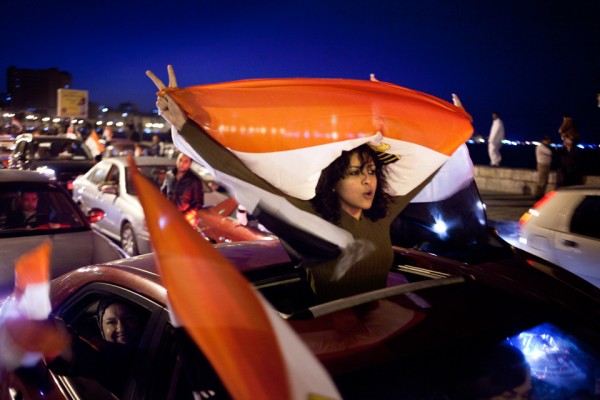
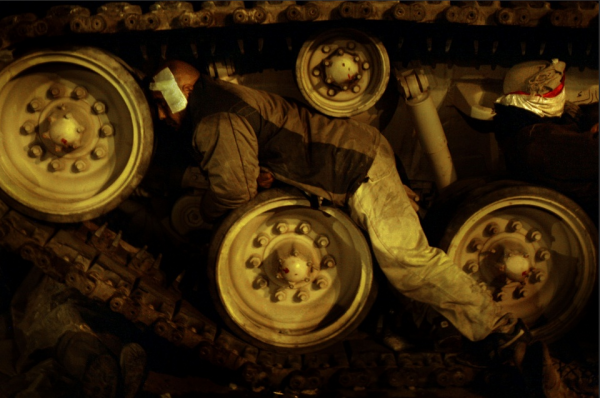
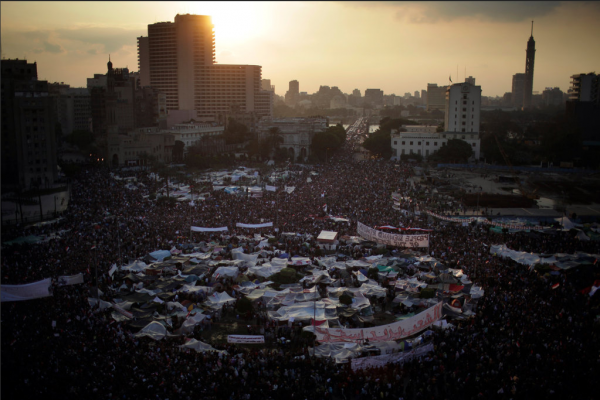
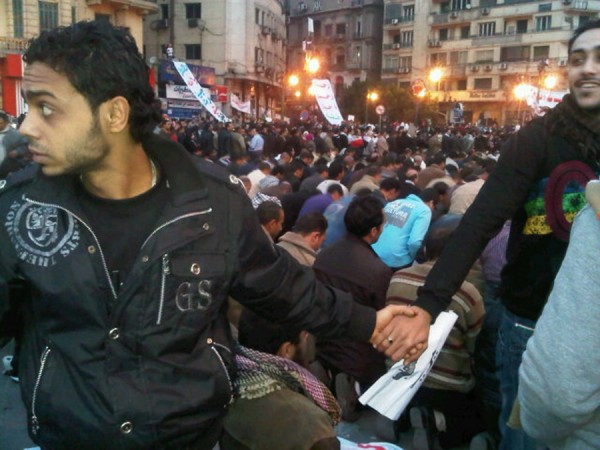
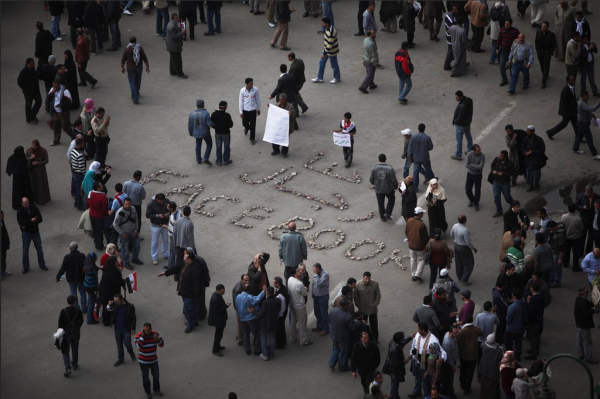
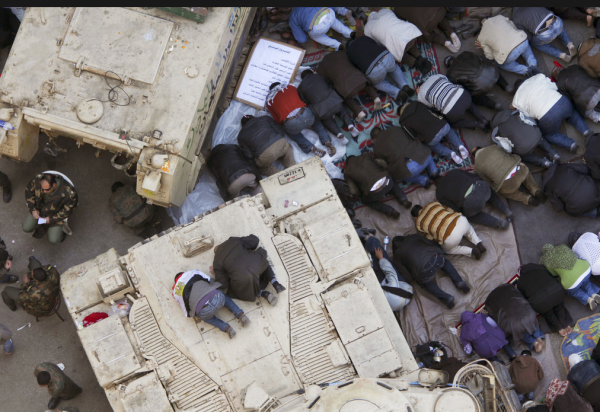
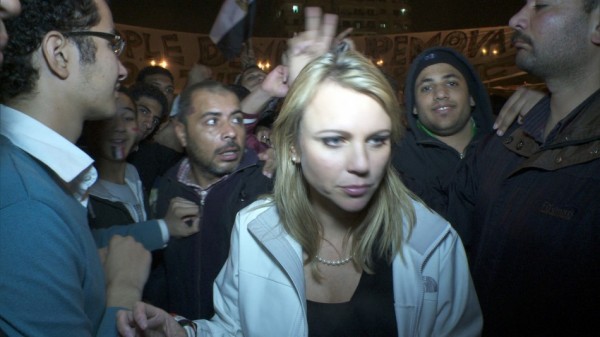
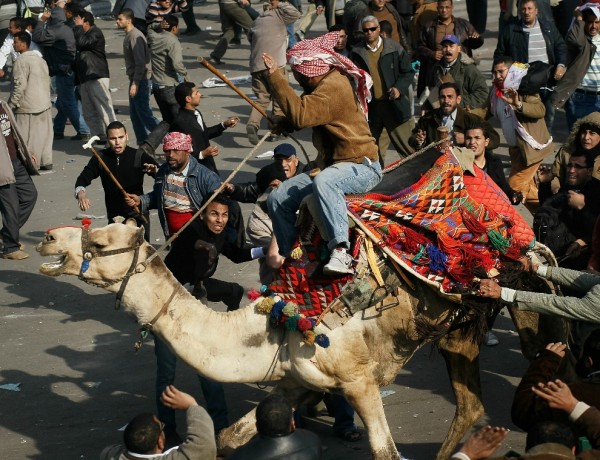
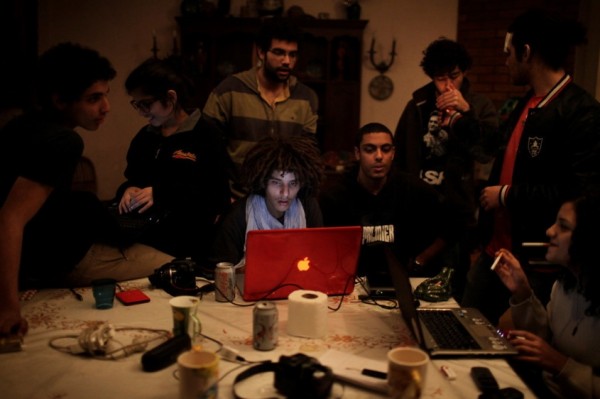









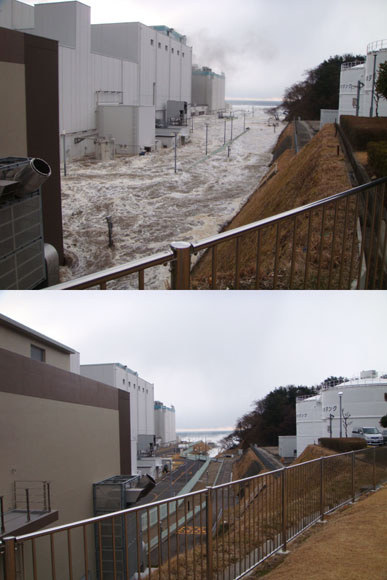
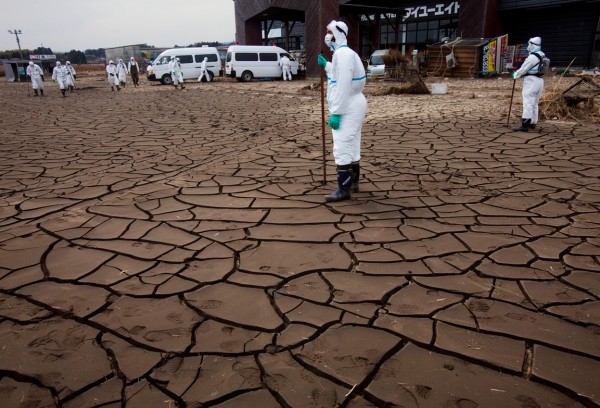
Reactions
Comments Powered by Disqus